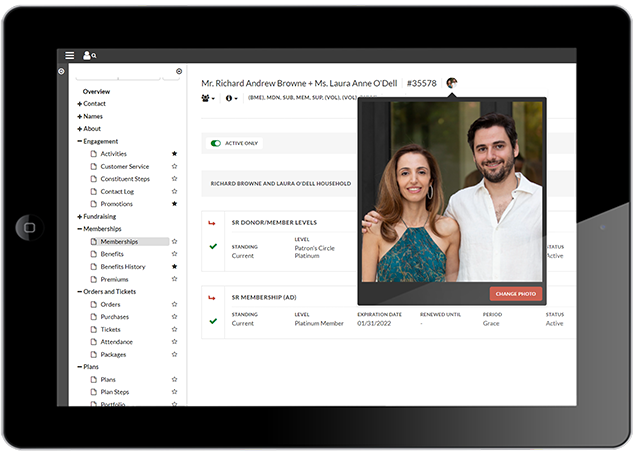Arts and Culture
BI and Analytics
Article
Insights & Innovation
f81411a2-9c1a-4803-bec5-5f6534155a19
5 min
https://edge.sitecorecloud.io/tessituraneab9a-tessiturane5642-staging-5396/media/Images/Licensee-Photography/Photos_768x465/Mystic_Beluga_768x465.jpg?h=465&iar=0&w=768
Three steps to a meaningful customer data strategy
Turn insight into action
10/12/2022
5 min
Arts and culture organizations have access to more data about their audiences and visitors than ever before.
With the right technology, you can capture insights every time someone visits your website or engages with your emails. You learn a little more when they buy a ticket, make a gift or attend an event. Every interaction helps paint a more complete picture of your members, subscribers or donors.
But if the sheer volume of data at your fingertips leaves you feeling overwhelmed, you’re not alone. Fortunately, with three key steps you can put your data to work in building better relationships and making more strategic decisions. When developing your organization’s data strategy, make sure your plans are intentional, actionable and accessible.
If the sheer volume of data at your fingertips leaves you feeling overwhelmed, you’re not alone.
1. Plan with intention
Just because you can collect data doesn’t necessarily mean you should. A good data plan requires more than gathering random information. Every piece of data you collect should serve a purpose, as should the analysis you undertake with it.
“I use analytics to look at various patterns in buying, response rates, things like that,” said Matthew Graber, Chief Marketing Officer at California’s San Diego Opera. “So, if we send a mail piece, it allows us to dig down and see who’s responding and who isn’t. A lot of it is looking, not just shelving, the data. Look at how you’re tracking against your KPIs and adjust strategically as you need.”
Interactive dashboards can help you dig deeper and ask more precise data questions.
What problem are you trying to solve? Knowing your organization’s answer can help you ask more precise questions of your data.
“If I say, ‘Ticket [sales] are $1,000,’ that doesn’t mean anything,” said Nate Pearson, Analytics Manager at Mystic Aquarium in Connecticut. “But if I say, ‘Our ticket revenue for this period is $1,000, and that breaks out for these five departments,’ and that data is then disseminated automatically, it presents a much more comprehensive and usable data framework.”
Recognize which data points help you address strategic priorities. Is your focus on new audience development or increasing retention? Have you prioritized increasing the number of donations or their size?
“How are tickets doing? That doesn’t mean much,” Nate continued. “But if I can say, ‘E-tickets are down 15% for this same period last year, but memberships are about the same,’ then I can start digging. What membership levels have come down? What promotions have run online?”
What problem are you trying to solve? Knowing the answer can help you ask more precise questions of your data.
2. Take subsequent action
Even the best data is meaningless if you do nothing with it. Data gains real value when you use it to make better decisions about what you’ll do next.
Responding to evolving purchase patterns has been critical for organizations navigating lingering effects of the pandemic. Omaha Performing Arts, known as O-pa, has seen a significant uptick in later ticket buying from audiences attending its productions this season.
“Prior to COVID-19, a show would be in market, and we would see about 10% of single tickets sold during that timeframe,” said Ashley Voorhees, the Nebraska organization’s Associate Vice President of Administrative Services. “We’re seeing now an average of 25% of our single ticket sales happening when the show is in market. So, it’s a much different shift for us from a marketing perspective.”
That change has required the O-pa team not only to examine audience data more frequently but also to make more real-time adjustments.
“It’s taking the 15 minutes to say, ‘This isn’t working, but if we switch it this way, we might see the results we need,’” Ashley said. “Being able to analyze the data on the fly is great for our organization because then we can make decisions to help get to the goals.”
Data gains real value when you use it to make better decisions about what you’ll do next.
Regular conversations about your organization’s data can also spark valuable collaboration. The John F. Kennedy Center for the Performing Arts in Washington, D.C., pools audience information from across the entire organization to segment new promotions more effectively.
“Having information on patrons from development, education and marketing allows us to create stronger campaigns because we can see areas of interest beyond just ticketed performances,” said Hayley McGuirl, Marketing Manager. “In May 2021, we had our first virtual jazz book club featuring Diane Reeves and Jason Moran. I was able to work with development and education to target people who have attended jazz workshops and the Betty Carter's Jazz Ahead program, [looking] beyond just people who have purchased jazz performances in the past.”

Your customer records should provide a central view of all their interactions with your organization.
3. Ensure easy access
Put your insights into action more frequently by making them accessible to everyone who needs them. It can be challenging to make meaningful connections when each department uses different systems.
Before implementing Tessitura in 2017, Mystic Aquarium used separate platforms for different types of transactions. “We had a ticketing system for onsite sales. We had a system for online sales,” Nate said. “We had a separate system for development, for contributions processing. We had a separate system for events. Being able to bring all those systems into one was a big selling point for us.”
Diligence in tracking every customer interaction also helps ensure continuity. Jennifer Hartmann, Assistant Director of Development at Orchestra Iowa in Cedar Rapids, compares a customer’s central database record to the medical records kept at their doctor’s office.
“When you call the doctor and you say, ‘Hey, I have this thing happening,’ the nurse or the person at the desk always has to write it down,” Jennifer said. “They always have to put it in their chart. So, we want to find out more about our donors. And we can only do that if we write down what we find out and look for trends.”
Diligence in tracking every customer interaction also helps ensure continuity when staff turns over.
Without those records, it’s easy to lose valuable context when staff turns over. A new team member might see year-to-year contributions but not understand why they increased or decreased when they did.
“You need to know all the ins and outs of how the person relates to the orchestra, how the person does other things in the community,” Jennifer said. “When you have this full picture of what people give, who their friends are, who their family is, what kinds of conversations they have in the bar after concerts … we know that’s a way to let donors know that we appreciate them.”
• • •
Tessitura’s innovative suite of analytics tools guides arts and culture organizations to better decisions. A unified view of your data enables easy analysis and instant insights, while predictive forecasting helps reduce uncertainty as you plan for the future. To learn more, explore Tessitura’s business intelligence features.
Top photo of guests enjoying a beluga whale encounter at Mystic Aquarium by Cheryl E. Miller.
Topics
Arts & Culture
/BI & Analytics

Propelling innovation
Arts & Culture / BI & Analytics / Business Strategy / Digital / Technology
Three technology advances driving digital transformation in arts and culture

Debunking four digital transformation myths
Arts & Culture / BI & Analytics / Business Strategy / Digital / Technology
Setting the record straight about common misconceptions
